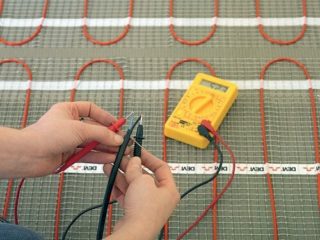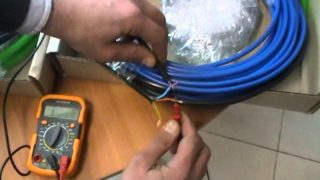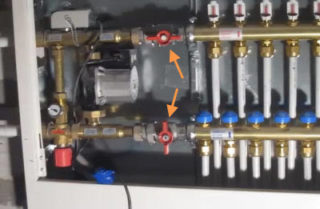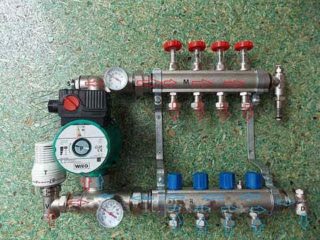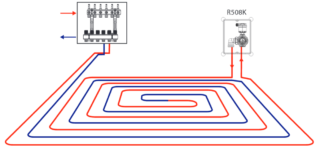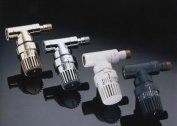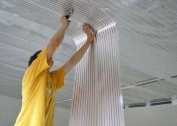The heat-insulated floor gains more and more popularity. It is installed as an additional heating of the room and as the main heating. It is indispensable in private houses with a cold basement or apartments on the ground floors. On sale are two main types of such systems: water and electric underfloor heating. The latter are considered more common, powered by electricity. The systems may fail, therefore, it is necessary to check their operability at the time of purchase, during installation and further during operation.
Checking the underfloor heating during purchase and after installation
The first check of the warm floor with a multimeter is carried out even with the purchase. The seller must, at the request of the client, demonstrate all the functionality of the product. In the kit, the product must be accompanied by documentation with the specified technical characteristics, insulation resistance values and mats. These data must be verified with the actual readings of a tester or multimeter.
After laying the heating elements, but before installing the floor covering or pouring the screed, it is necessary to check the warm floor for a second time for operability. To do this, you first need to make sure the integrity of the heating cable. Then the system is connected to the mains and for some time they observe the operation of different modes. At this stage, it is important to verify the correct functioning of the temperature sensor and thermostat. Proper operation requires uniform heating of all cable sections. There should be a change in the heating temperature of the elements in accordance with the set parameters of the thermostat.
If a malfunction is detected during installation, it is best not to look for the problem, not to try to solve it, because This is most likely a warranty case. You should contact the store where the goods were purchased, replace it with a working one.
Multimeter resistance measurement
When ceramic tile is selected as the floor covering until the screed and tile adhesive are completely dry, the heating cable of the system must not be connected to the network. To make sure the device is working, you need to use a special device - check the warm floor with a multimeter:
- The device sets the resistance measurement mode, sets a limit of 2000 ohms. Make sure to set up the multimeter correctly. To do this, short-circuit its probes - zero should appear on the screen.
- Find a heating cable and measure the resistance between its conductors. The result is a value of 409 ohms.
- Compare the result with the data specified in the device passport. Please note that the resistance of a warm floor may depend on the ambient temperature and cable length. The margin of error is considered to be a difference in measurements of 10-15%. In this case, the user manual indicates a resistance of 360 Ohms. The difference between the measurement and the value specified in the document was 14%, which is considered acceptable.
- The resistance of the insulating material is measured. The multimeter is put into 2000 kOhm mode and each cable core is called. The readings of the device should tend to unity, which confirms the absence of violations of the integrity of the braid of the heating element.
It is advisable to conduct a test inspection at all stages of work with a warm floor.When buying in a store together with a sales assistant, then after installing the system, pouring screed and laying ceramic tiles.
The main causes of malfunctions
To find and fix a malfunction in a cable system underfloor heating, you must have an idea of its design. It consists of a cable, thermostat, temperature sensor.
- A heating cable is a heating element that serves as a source of heat. It can be of two types: resistive and self-regulating. The latter reacts to temperature changes and independently changes the resistance level.
- The temperature sensor monitors the degree of heating of the wire. It is installed inside the concrete screed directly near the heat source.
- The thermostat (thermostat) turns the heating element on or off, depending on the set temperature. It has the appearance of a small switch and regulates the voltage that is supplied to the cable.
For proper operation and long-term service of the warm floor, the cable length should be clearly calculated. Some of its species cannot be shortened, because these actions will lead to a change in the characteristics of the current and the heating level. If this property is neglected, the system will not function correctly, the insulation of the wires will quickly collapse.
Failure Check
During installation or further operation of the underfloor heating, as with any other devices, malfunctions can occur. The user can call the wizard to fix the problem or do the repair themselves. In general, no special difficulties should arise. However, the diagnostic methods and causes of malfunctions for different types of systems may differ.
Diagnostics of malfunctions of a water heat-insulated floor
When a water-heated floor is installed in the house, which is connected to central or autonomous heating, there can be several reasons for the lack of heating. System diagnostics are made when it is fully turned on.
If there is no heating throughout the house, the hydraulic pump is defective or the filter is clogged. There may not be enough water in the distribution tank or the boiler does not work. The first step is to check the liquid level in the expansion tank, as in 20% of cases this is the cause of the malfunction.
If some part of the warm floor does not heat up, for example, one room, the coil is most likely defective or the filter is clogged.
When there is enough water, the filters are cleaned of contaminants, but the problem with heating persists, you should check if there is an air plug. For this, pumping is carried out. The air valve opens, water gradually squeezes the air out of the expansion tank. As soon as air is completely out, fluid will begin to drip from the air valve. Then the valve closes tightly, the system is refilled with water.
Also, the cause may be incorrect operation of the circulation pump. It should work smoothly, without extraneous noise and vibration. If this is not the case, the pump should be replaced.
It will be useful to check the pressure in the system. For this, a pressure gauge is installed after the pump. In normal condition, it should show 0.5 bar. The cause of low pressure is a leak in the pipe. In this case, it is required to determine the location and perform an autopsy of the problem area for its repair.
Another reason for the lack of heating of the water floor can be clogged pipes with mud. They are formed due to poorly filtered water. Only masters will be able to eliminate the blockage with the help of special reagents.
Diagnostics of malfunctions of an electric heat-insulated floor
First you need to make sure that there is electricity in the house and it is supplied to the thermostat. The glow of the bulb or display panel on the device is checked. Next, you need to check the temperature settings. If everything is normal here, check on.
- There is no heating throughout the area. When a warm floor is connected to the network, the machine in the shield is turned off by the protection, this indicates a short circuit in the cable. To determine the place of damage, the voltage is turned off, the supply wires are disconnected from the thermostat. It is necessary to ring the segment between the shield and the regulator. The multimeter shows zero resistance - the wiring in this place is damaged. Otherwise, the search continues. The heating cable is disconnected from the thermostat, it is necessary to measure the resistance at its input. If a short circuit is detected here, the damage is inside the regulator and must be replaced. If there is no short circuit, only the heating cable itself remains. The resistance between his veins is measured. If the readings on the screen of the device tend to infinity, this indicates a cable break.
- The temperature is not adjustable. If the elements of the warm floor warm up over the entire area, but do not respond to changes in the values on the thermostat, it means that the controller is not working properly or the temperature sensor is faulty. In the first case, the temperature controller must be replaced. In the second, the wires of the temperature sensor are disconnected from the controller and resistance is measured between them. The value must match the data from the manufacturer's documentation. If the values do not match, the floor covering is removed, the sensor is replaced with a new one.
- Individual sections do not heat up. Check the uniformity of heating using a thermal imager. In case of uneven heating, it is necessary to check the amount of power consumption. If it is less than declared by the manufacturer, the heating cable is broken and some of the elements remain de-energized. The system consumes increased power - a short circuit has occurred between the individual cable elements. With this option, part of the heaters does not function, and the other part consumes an overestimated amount of electricity.
A cable or infrared film underfloor heating should be checked for malfunctions with a multimeter at all stages of work with heating elements. This will help to purchase and install working equipment. If a problem occurs during operation, the multimeter will help to correctly identify and independently cope with the breakdown, repair or replace failed parts of the system.
